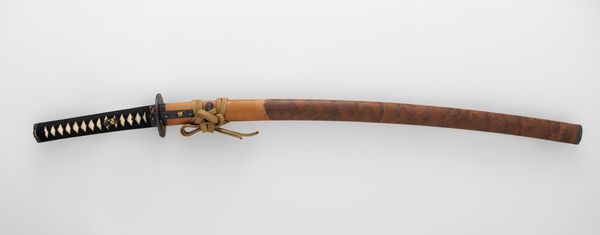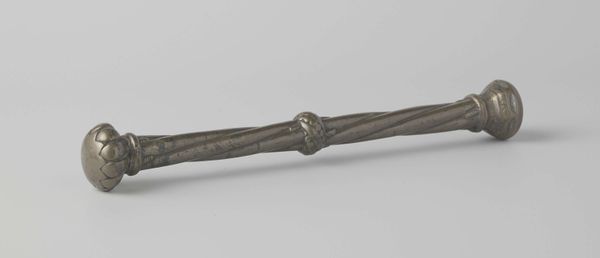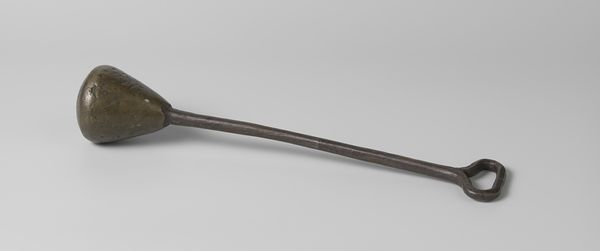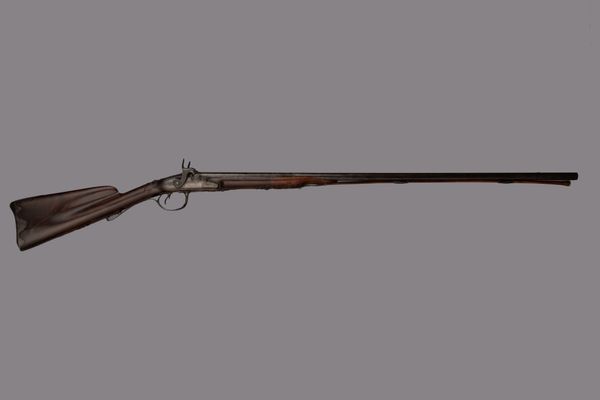
Blade and Mounting for a Short Sword (Wakizashi) 1650 - 1900
0:00
0:00
metal, photography, wood
#
still-life-photography
#
metal
#
asian-art
#
photography
#
wood
#
armor
#
sword
Dimensions: L. 27 1/16 in. (68.7 cm); L. of blade 23 5/8 in. (60 cm); L. of cutting edge 17 3/4 in.(45.1 cm); D. of curvature 3/8 in. (0.9 cm); L. of knife (kozuka) 8 1/2 in. (21.6 cm); L. of hair dressing tool (kogai) 8 1/4 in. (21.0 cm)
Copyright: Public Domain
Curator: What strikes me immediately is the poised elegance. The stillness of the wood and the dark hilt suggest a certain readiness, an object in wait. Editor: It does have a quiet energy, doesn’t it? We’re looking at a photograph of a wakizashi—a blade and mounting for a short sword. This particular piece in the Met's collection dates from between 1650 and 1900, made in Japan by Yokoyama Kōzukedaijō Sukesada. Curator: Sukesada. Already, that name rings of prestige and martial tradition. The wakizashi, traditionally, was paired with the katana, wasn't it? Like a full stop on a warrior's soul. Editor: Absolutely, it was part of the samurai’s daisho—their matched pair of swords. Where the katana was for battlefield combat, the wakizashi served in closer quarters, or even for ritual suicide—seppuku. The metal of the blade isn’t visible in the mounting, but it is very present with all of the other hard elements—lacquered wood, braided chords, iron fittings. It speaks to honor, duty, and even the acceptance of death. Curator: You know, looking closer, it’s fascinating how even something as seemingly functional as the wrapping around the hilt can be imbued with meaning. That geometric pattern… those repeating diamonds. I wonder, were they purely decorative, or did they also symbolize protection or clan identity? Editor: Probably both. Ornamentation was rarely just that—it amplified and echoed deeper-seated values, spiritual beliefs, or affiliations. Those gleaming diamond shapes on the handle contrast starkly with the more muted, organic quality of the scabbard. A juxtaposition of the spiritual warrior and natural transience, perhaps? Curator: The wood casing definitely exudes a feeling of impermanence. It has the markings of having been worn down over the course of generations. Like layers of memory built into it... even echoes of former lives. Editor: Exactly! It’s an object forged with a lethal purpose but carries whispers of life, ritual, and transformation within its carefully crafted design. Curator: So much implied. Thank you, it gives you something to think about in ways more immediate and potent than something purely decorative might do.
Comments
No comments
Be the first to comment and join the conversation on the ultimate creative platform.













